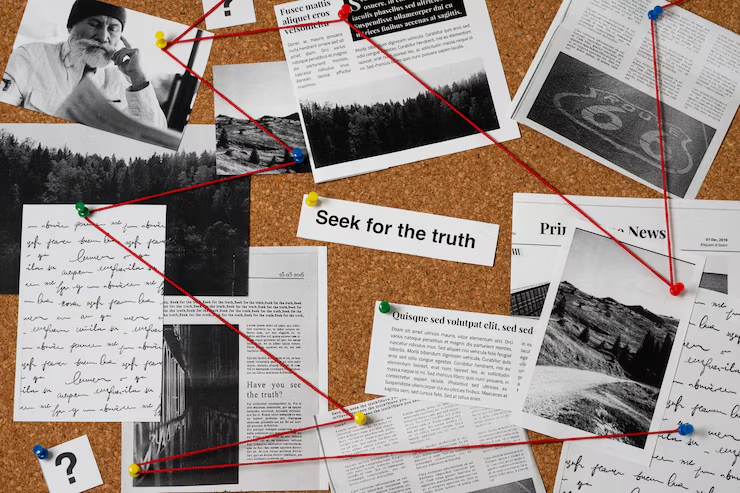In the age of social media and instant messaging, heartfelt emotions are often left unsaid. The Unsent Project is a powerful reminder of those words we never speak out loud. Created by artist Rora Blue, this ever-growing collection of anonymous love letters offers a raw, emotional insight into what people wish they could say to their first loves. From heartbreak to healing, the Unsent Project encapsulates the very essence of human emotion.
What Is the Unsent Project?
At its core, the Unsent Project is a crowd-sourced digital archive of messages never sent. Contributors submit short, emotional letters addressed to their first loves, and each message is associated with a color the sender believes represents that person. The result is a beautiful, chaotic spectrum of human emotion, catalogued in hues of passion, regret, and longing.
The project began in 2015 as an exploration of unspoken feelings and how color is tied to memory and emotion. Since then, it has grown into a global phenomenon, with over 800,000 submissions to date. Each entry in the Unsent Project serves as both a personal release for the sender and a shared experience for viewers.
The Artistic Vision Behind the Unsent Project
The creator, Rora Blue, developed the Unsent Project not only as an emotional outlet but also as an artistic experiment. Blue’s goal was to investigate how color and language intersect in emotional memory. Every entry is associated with a color, offering a new dimension to each unsent message.
This visual element adds depth to the project, inviting users to search the archive by color or keyword. It’s not uncommon to find dozens of letters under the same shade of red or blue, revealing patterns in how we collectively feel about love, pain, and closure.
Why the Unsent Project Resonates Globally
One of the most striking aspects of the Unsent Project is its universality. Everyone, at some point, has had something they wished they could say but didn’t. This project gives those words a home, a place where vulnerability is not just accepted—it’s celebrated.
The messages range from simple declarations of love to complex expressions of grief, betrayal, and forgiveness. What ties them all together is honesty. Whether it’s a sentence, a paragraph, or a few jumbled thoughts, each note in the Unsent Project is profoundly human.
Emotional Catharsis Through Anonymous Expression
Many contributors to the Unsent Project find the process therapeutic. Writing out thoughts that were once bottled up can provide emotional release, even without sending the message to its intended recipient. The anonymity allows for true, uninhibited expression.
In this way, the Unsent Project becomes more than just an art installation or social experiment—it turns into a safe space. For many, it’s a form of healing, a way to acknowledge pain without needing to confront it directly.
Colors, Memory, and Meaning in the Unsent Project
Each message in the Unsent Project is tied to a specific color, chosen by the sender. This visual cue offers a fascinating insight into how people associate emotion with color. Red often symbolizes passion or anger. Blue may represent sadness or calm. Yellow could indicate happiness or nostalgia.
This synesthetic component gives the archive a distinctive aesthetic and emotional feel. Browsing through the Unsent Project is like walking through a gallery of color-coded memories, where each hue holds a thousand silent stories.
The Role of Social Media in Spreading the Unsent Project
The rise of platforms like Instagram and TikTok has helped propel the into public consciousness. Screenshots of emotional entries frequently go viral, sparking discussions about love, loss, and regret.
As a result, the project has become a cultural touchstone for a generation that often struggles with vulnerability in the digital age. It proves that people are still yearning to be heard—even if their messages remain unsent.
Educational and Psychological Insights from the Unsent Project
Beyond its artistic and emotional value, the offers potential insights for educators and psychologists. It opens up discussions around emotional intelligence, communication, and mental health. The anonymous letters can serve as conversation starters in classrooms or therapy sessions, helping individuals articulate their feelings through reflection and empathy.
The data collected from this project could even be studied to better understand patterns in emotional behavior, attachment, and coping mechanisms.
How to Participate in the Unsent Project
Joining the Unsent Project is simple. Visit the official website, where you’ll find a form to submit your own letter. You’ll be asked to type out your message and choose a color that best represents the person it’s about. Submissions are completely anonymous, making it a comfortable process even for those who typically shy away from vulnerability.
After submitting, your message may become part of the public archive, where others can read and resonate with your experience.
Criticisms and Considerations
While the Unsent Project has been praised for its emotional depth, some critics question the implications of romanticizing unspoken feelings. There are also concerns about the potential for messages to unintentionally cause harm if recognized by their subjects.
However, these critiques don’t outweigh the project’s overall positive impact. The remains a powerful reminder of the complexity of human emotion and the importance of expression—even in anonymity.
The Unsent Project as a Reflection of Our Time
In many ways, the is a mirror of modern society. It reflects the things we hide behind our screens, the vulnerability we suppress in real life. In a fast-paced, filtered world, it stands out as a raw, unfiltered collection of what truly matters: connection, memory, and emotion.
It encourages us not only to feel deeply but also to understand that it’s okay to leave some things unsaid—as long as we acknowledge them within ourselves.
Final Thoughts
The Unsent Project isn’t just a website. It’s a collective emotional diary, a work of art, and a digital confessional. With its global reach and deeply personal content, it reminds us that everyone has a story, a heartbreak, or a moment they never got to share.
By offering an anonymous platform for these voices, the project turns silence into strength and unspoken words into powerful expressions of human connection.

